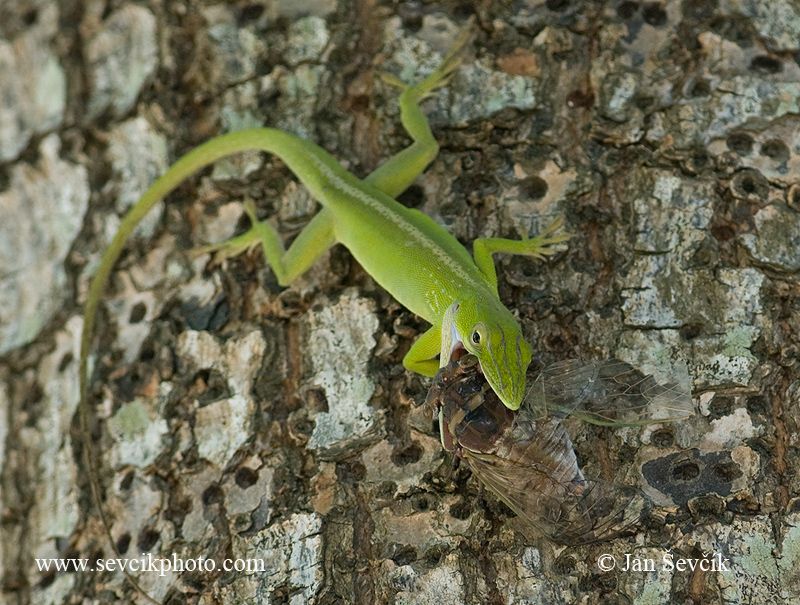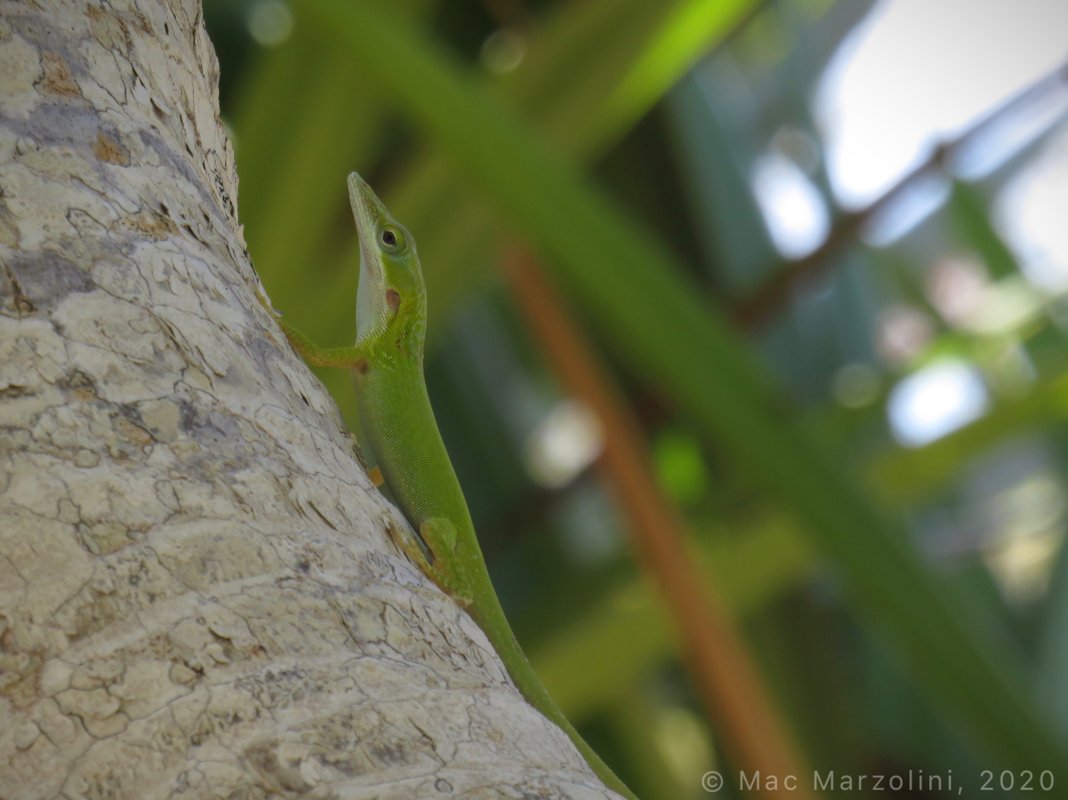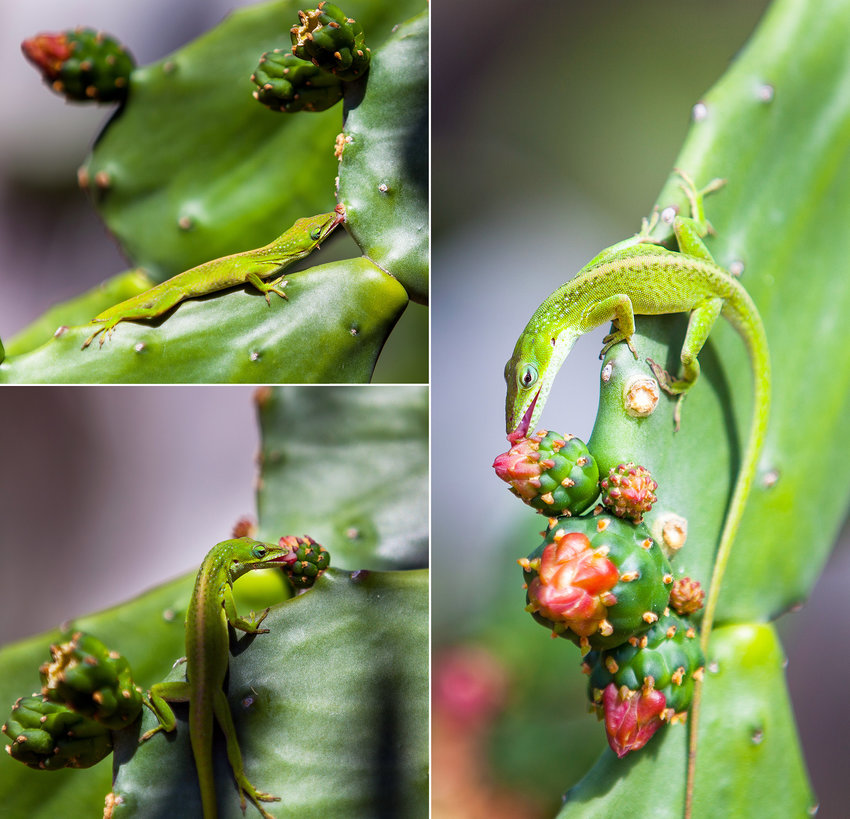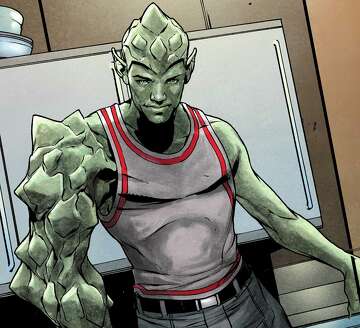From the onset of my scientific career I have been fascinated by the pectoral girdle. In its structural and functional diversity it is barely rivaled by any other skeletal part of the tetrapod body. Anoles, in particular, employ their forelimbs not only in locomotion, but also in various routines of display, grooming, feeding, or mating. It is likely that the different functional roles fulfilled by the pectoral limb and girdle impose varying, and potentially opposing, selective pressures onto the evolution of its structural form.
Jane Peterson briefly alluded to the structural variance displayed by the different anole ecomorphs, relating them to specific locomotor requirements by providing brief descriptions in her thesis (1973) and the First Anolis Newsletter (1974). However, beyond this initial work, and a few qualitative assessments in papers regarding phylogenetically informative characters, very little is known about the variability of the anole pectoral girdle.

Right scapulocoracoid of three anole species, representative of the Jamaican lineage. The arrow denotes anterior. (via Tinius et al. 2020)
In many ways, our recent publication in the Annals of Anatomy (Tinius et al. 2020) is a dream come true (at least for me), as it allowed us to finally visualise the patterns of morphological variation that Peterson (1974) could only communicate in descriptions. Because the shoulder girdle is comprised of multiple elements that are mobile with respect to one another, this paper only investigated one of its moieties: the scapulocoracoid. This paired structure spans the entire height of the body wall, is comprised of developmentally very different compounds, and directly connects the forelimb to a midline element, the presternal plate. These attributes made it a great starting point for our investigations of the pectoral girdle.
In describing the scapulocoracoid of two non-anoline iguanids, Polychrus and Pristidactylus, we anchored our comparisons in two well-studied and closely related lizards. We then expanded on this anatomical framework by comparing all representatives of the monophyletic Jamaican anole radiation to their respective ecomorph representatives on Puerto Rico and Hispaniola. We tried to take full account of the variability of the scapulocoracoid by examining it both qualitatively, in images and comparative description, and quantitatively, through geometric morphometric analysis.

Canonical Variate Analysis (CVA) of the right scapulocoracoid of Greater Antillean anoles, including warp image of the scapulocoracoid denoting shape changes along CV1 and CV2. (via Tinius et al. 2020)
We found that regardless of potential phylogenetic constraints on skeletal morphology, morphospatial occupancy differs markedly between ecomorph groups. Unexpectedly, twig anoles show the most distinctive shape of the scapulocoracoid, with a relatively tall scapula and anteroposteriorly short coracoid, similar to the situation found in chameleons (Fischer et al. 2010). But despite a significant overlap in morphospatial occupancy, the other three ecomorphs examined (trunk-ground, trunk-crown, and crown-giant) also exhibit trends towards a specialized scapulocoracoid morphology, such as a relatively wide/cylindrical scapulocoracoid in trunk-ground anoles.
These variations in form likely impact the size and vectors of muscles attaching to the scapulocoracoid. One muscle group that is likely particularly impacted by the differences in scapulocoracoid form is the M. serratus anterior. This muscle group originates laterally on the cervical ribs and inserts on the medial aspect of the suprascapula. The M. serratus anterior group stabilizes the scapulocoracoid during locomotion and protracts/retracts it along the body wall. The anteroposteriorly more extensive suprascapula of crown-giant anoles likely facilitates more forceful scapular retraction, through the relatively greater attachment area for this muscle and the anterior disposition of its insertion area. Contrastingly, the relatively tall scapula of twig forms likely allows for a greater moment arm acting through this muscle group, while the anteroposteriorly short suprascapula facilitates more precise protraction/retraction of the scapulocoracoid.

Right scapulocoracoid of Anolis insolitus in a) lateral, and b) medial view, showing the attachment sites of major muscle groups that act upon the scapulocoracoid. (via Tinius et al. 2020)
My only regret about this project is the exclusion of Cuban anoles, which markedly limited our ability to compare patterns in a wider phylogenetic context. Most of the crown-giant and trunk-crown anoles examined belong to their own ecologically homogenous clade, making it impossible to discern ecological from morphological signal.
The Jamaican Anolis clade provides a glimpse into what might be achieved with a phylogenetically broader sample, as it represents four major ecomorph groups (five, if you attribute A. opalinus to the trunk group) plus two non-ecomorph species within a seven-species radiation. Despite the relatively young age of the Jamaican clade, its ecomorph representatives exhibit a push towards specialized morphologies of the scapulocoracoid, even if this level of specialization is markedly smaller than in their Puerto-Rican and Hispaniolan relatives. A future widening of our sample should allow us to answer some intriguing questions regarding the retention and diversification of ecomorphologically specialized forms within distinct phylogenetic lineages.
Literature cited
Fischer, M.S, Krause, C. & Lilje, K.E. (2010): Evolution of chameleon locomotion, or how to become arboreal as a reptile.─ Zoology, 113:67-74.
Peterson, J.A. (1973): Adaptation for arboreal locomotion in the shoulder region of lizards.─ Ph.D. thesis, University of Chicago.
Peterson, J.A. (1974) [In:] Williams, E.E. (ed.) The First Anolis Newsletter. Cambridge, Massachusetts: Museum of Comparative Zoology, Harvard University.
Tinius, A., Russell, A.P., Jamniczky, H.A. & Anderson, J.S. (2020): Ecomorphological associations of scapulocoracoid form in Greater Antillean Anolis lizards.─ Annals of Anatomy, 231; doi.org/10.1016/j.aanat.2020.151527.










 Two weeks ago, I was invited to one of the
Two weeks ago, I was invited to one of the 










 First of all, we did not find changes in thermal preference range between the three localities. Similarly, cold tolerance (CTmin) and thermal performance breadth were similar along the elevational gradient. Nevertheless, the most exciting discovery was that cold tolerance (CTmin) is very low (4.4°C in Matarredonda) and thermal performance ranges are wide. Surprisingly, CTmin in Chicaque, the lowest altitude, was 6.2°C, even though the potential lowest body temperatures at night could be only 10°C (calculated as operative temperatures with our null-models of Anolis heterodermus). This clue makes us think that maybe cold tolerance is constant due to a niche conservatism: during Pleistocene glaciations, Andean ecosystems were colder than now, and maybe this trait did not evolve when climate became warmer because there is no selective pressure for that. Definitely, Anolis heterodermus is the king mountain of anoles (in fact, it has a co-osified cranial crown).
First of all, we did not find changes in thermal preference range between the three localities. Similarly, cold tolerance (CTmin) and thermal performance breadth were similar along the elevational gradient. Nevertheless, the most exciting discovery was that cold tolerance (CTmin) is very low (4.4°C in Matarredonda) and thermal performance ranges are wide. Surprisingly, CTmin in Chicaque, the lowest altitude, was 6.2°C, even though the potential lowest body temperatures at night could be only 10°C (calculated as operative temperatures with our null-models of Anolis heterodermus). This clue makes us think that maybe cold tolerance is constant due to a niche conservatism: during Pleistocene glaciations, Andean ecosystems were colder than now, and maybe this trait did not evolve when climate became warmer because there is no selective pressure for that. Definitely, Anolis heterodermus is the king mountain of anoles (in fact, it has a co-osified cranial crown).







